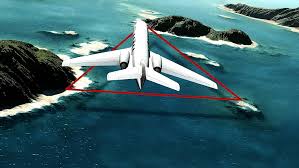Exploring Mid-Ocean Ridge Systems: A Deep Dive into the Mid-Atlantic Ridge

The Earth’s surface is in a constant state of transformation, sculpted by powerful geological forces operating beneath the crust. One of the most significant and fascinating features of this dynamic geology is the mid-ocean ridge. Mid-ocean ridges are vast underwater mountain ranges that span the ocean floor, playing a pivotal role in plate tectonics and seafloor spreading. Among these, the Mid-Atlantic Ridge stands out as a quintessential example—stretching across the floor of the Atlantic Ocean and providing valuable insights into Earth’s geological activity. In this blog, we’ll explore the concept of mid-ocean ridges with a focus on the Mid-Atlantic Ridge, examining its formation, significance, and its role in our planet’s geology.
What Is a Mid-Ocean Ridge?
A mid-ocean ridge is a continuous underwater mountain range formed by plate tectonics. These ridges arise at divergent boundaries where two tectonic plates are moving away from each other. As the plates diverge, magma from the Earth’s mantle rises to fill the gap, solidifying to form new oceanic crust. Over time, this process creates an elongated chain of mountains beneath the ocean, characterized by high volcanic activity, deep-sea vents, and tectonic uplift.
Mid-ocean ridges are the largest geological features on Earth, with a global system extending over 65,000 kilometers. They are often referred to as the “spine” of the ocean basins. The process of seafloor spreading at these ridges is fundamental to the theory of plate tectonics and contributes to continental drift.
The Mid-Atlantic Ridge: A Classic Example
The Mid-Atlantic Ridge (MAR) is the most prominent and well-studied example of a mid-ocean ridge. It runs down the center of the Atlantic Ocean, roughly equidistant between the Americas and Europe-Africa, stretching from the Arctic Ocean in the north to the Southern Ocean near Antarctica. With a length of approximately 16,000 kilometers, it is a defining feature of the Atlantic basin.
1. Geographic Scope and Visibility
The Mid-Atlantic Ridge is unique in that parts of it actually rise above sea level, most notably in Iceland. Here, the divergent boundary between the North American and Eurasian plates is visible on land, making Iceland one of the few places on Earth where you can walk along a mid-ocean ridge. The island sits directly atop the ridge, and its dynamic volcanic landscape—including active volcanoes, hot springs, and geysers—is shaped by this tectonic setting.
2. Tectonic Significance
The Mid-Atlantic Ridge marks the boundary between several major tectonic plates, including:
-
The North American Plate and Eurasian Plate in the north,
-
The South American Plate and African Plate in the south.
As these plates move apart, new oceanic crust is continuously formed at the ridge. This process is relatively slow, occurring at a rate of 2.5 cm per year—significantly slower than ridges in the Pacific Ocean. Despite its slow spreading rate, the MAR is geologically active, featuring frequent earthquakes and volcanic eruptions.
Geological Features of the Mid-Atlantic Ridge
1. Rift Valleys
At the crest of the Mid-Atlantic Ridge lies a deep central valley known as a rift valley. This is formed by the tensional forces pulling the plates apart, causing the crust to fracture and sink. These rift valleys can be several kilometers wide and hundreds of meters deep, housing unique ecosystems supported by hydrothermal vents.
2. Hydrothermal Vents and Life
The Mid-Atlantic Ridge is home to numerous hydrothermal vents, also known as “black smokers.” These vents emit superheated, mineral-rich water, creating an environment that supports complex ecosystems based on chemosynthesis rather than sunlight. Organisms such as giant tube worms, blind shrimp, and unique bacteria thrive in these extreme conditions, offering a glimpse into life forms that could exist on other planets or moons with subsurface oceans.
3. Volcanism
Volcanic activity is prevalent along the ridge, especially in regions like Iceland. The Eyjafjallajökull and Hekla volcanoes are fed by magma rising along the Mid-Atlantic Ridge. Submarine eruptions also occur frequently, though they are harder to monitor and observe.
Importance of the Mid-Atlantic Ridge
1. Understanding Plate Tectonics
The Mid-Atlantic Ridge was instrumental in validating the theory of plate tectonics and continental drift, first proposed by Alfred Wegener. Mapping of the ridge and the discovery of symmetrical magnetic striping on either side of the ridge in the 1960s provided compelling evidence that new crust was being created and pushed outward, supporting the process of seafloor spreading.
2. Resource Exploration
Hydrothermal vents on the Mid-Atlantic Ridge are rich in minerals such as copper, zinc, and rare earth elements. These deposits have attracted interest in deep-sea mining, although environmental and ethical concerns pose challenges to such activities.
3. Scientific Research
The MAR continues to be a focal point for oceanographic and geological research. Institutions like the Woods Hole Oceanographic Institution and IFREMER (France) have conducted extensive studies using submersibles and remotely operated vehicles (ROVs) to explore the ridge’s geology and biology.
Human Interaction and Environmental Concerns
With the increasing interest in ocean exploration and the potential for resource extraction, the Mid-Atlantic Ridge has come under scrutiny from environmental scientists and policymakers. Mining activities, even if technically feasible, could disrupt delicate ecosystems that have taken millennia to evolve. Additionally, underwater earthquakes and volcanic eruptions can pose risks to submarine cables and shipping routes.
Conclusion
The Mid-Atlantic Ridge is not just a geological marvel—it is a window into the dynamic processes that shape our planet. As a prime example of a mid-ocean ridge, it highlights the ongoing creation of Earth’s crust, supports unique life forms, and contributes to our understanding of plate tectonics. Whether viewed from the volcanic landscapes of Iceland or explored through deep-sea submersibles, the Mid-Atlantic Ridge serves as a powerful reminder of Earth’s ever-changing nature.
As science and technology advance, our ability to explore and understand this vast underwater mountain range will only improve. Yet, with this power comes the responsibility to protect and preserve these natural wonders for future generations to study and admire.






Leave a Comment